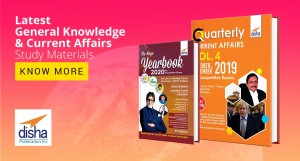The National Geographic Society and Microsoft’s AI for Earth program are partnering to support novel projects that create and deploy AI tools to improve the way we monitor, model, understand, and ultimately manage Earth’s natural resources for a more sustainable future.
The grants given by the partnership will support projects that use cloud computing to create and deploy open-source models and algorithms that make key analytical processes more efficient in the field. This partnership is focused on supporting projects that will build tools such as applications, application programming interfaces (APIs), or packages to be shared. Microsoft will help the successful applicants make their models and tools available for use by other environmental researchers and innovators.
Extreme weather events, wildlife trafficking, rising sea levels, increased agricultural and urban development demands, higher global temperatures, and increased ocean acidity are among the threats to the natural systems and biodiversity we rely on. Proposed work should address one or more of the topics below and create generalizable, scalable tools that can be used by other environmental researchers and conservationists.
Biodiversity: Biodiversity around the world is rapidly declining. AI can help us understand and address challenges such as these:
Human-wildlife conflict
Invasive species introduction and spread
Habitat loss, including agricultural and urban encroachment
Species discovery, identification, and distribution
Wildlife poaching and trafficking
Climate Change: Countries and communities around the world are engaged in climate resilience, adaptation, and mitigation efforts. AI can help in areas such as these:
Understanding and quantifying carbon sequestration
Monitoring and understanding afforestation/reforestation efforts
Identifying fire risks and ways to mitigate damage
Extreme weather and climate modeling
Sustainable land-use change
Resilience to impacts caused by extreme events (e.g., droughts, floods, other natural disasters)
To strengthen your proposal, consider building a multidisciplinary team that spans technology and environmental science. For example, pair an expert capable of creating and deploying an open-source model or tool with an environmental research specialist who could use that model or tool to address a pressing habitat loss question. We require that at least one member of your team has demonstrated technical skills (such as in machine learning, statistical data analysis, scientific modeling, software development, and/or remote sensing) to successfully complete the proposed project.
Projects will be evaluated and prioritized on the following:
Justification and importance of the proposed focus area
Justification of the need for cloud computing
Likelihood of the model or tool to scale and create lasting impact
For examples of projects that combine human ingenuity and AI to solve some of the biggest environmental challenges of our time, refer to our current National Geographic AI for Earth Innovation projects and the Microsoft AI for Earth Technical Resources page.











































































No comments:
Post a Comment
Thank you for leaving your comment. Your comment will appear here after moderated by the administrator. Only comments having proper names of the person with a genuine content will be considered for publishing.